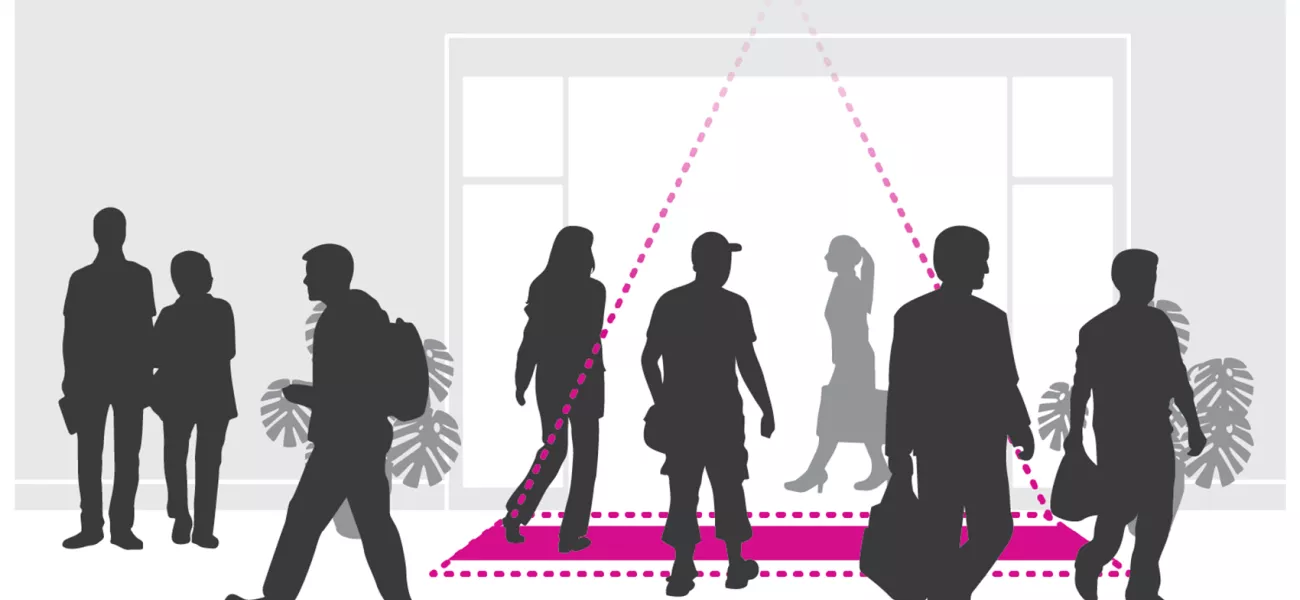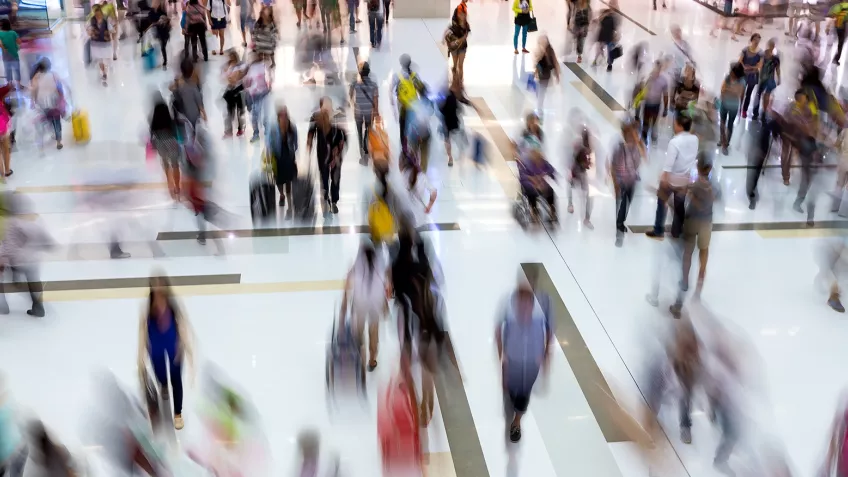
Occupancy estimation technology has put new data in the hands of retailers, helping them to better understand foot traffic patterns and how space is used. Amid the COVID-19 crisis, the importance of this technology is more apparent than ever—but its value will extend far into the future.
Understanding how to efficiently and effectively use space has always been a point of emphasis for retailers. Yet, until this year most customers had probably never given a second thought to how many other people might be in a store with them. The COVID-19 pandemic changed that, with people counting and occupancy estimation taking on additional importance amid the newfound need for social distancing.
Although the pandemic brought this technology to the forefront, the truth is that the usefulness of modern occupancy estimation solutions extends far beyond the current crisis. And while businesses are deploying the technology to meet the needs of the moment, many are smartly keeping one eye on the future.
We recently spoke with Robert K. Brown, a solutions architect with Axis Communications Inc., about how occupancy estimation is being deployed amid the COVID-19 crisis and why he expects businesses to embrace the technology for other uses even when the pandemic officially comes to an end.
The right technology at the right time
Given the technology’s growing importance, Brown immediately notes that it’s important to understand the difference between people counting and occupancy estimation. Although the technologies sound similar, there are several key differences that impact how they’re deployed.
“People counting is exactly what it sounds like,” Brown explains. “It counts people coming in and out of an entrance. The occupancy estimator is a layer on top of that, which allows the user to pull counts from multiple entrances and calculate how many people are in that location. It still uses people counting to do that work, but without the occupancy estimator, there is no ability to associate entrances and understand the totality of what is going on at that location.”
Take, for example, AXIS Occupancy Estimator. Brown explains that not only can this application integrate counts from multiple entrances, it can also set a threshold, also known as an occupancy limit, and trigger an alert if that limit is reached. He stresses the importance of this capability, especially as businesses continue to adapt their operations to meet state and local COVID-19 restrictions.
“Many stores right now have staff at the door doing nothing other than counting people as they enter,” says Brown. “They have to hire somebody to do that. With people counting and occupancy estimation, that data is automatically fed into a single dashboard, which enables more efficient use of staff and becomes more immediate and more actionable in a COVID-19 world.”

Network technology usage beyond the pandemic
Technologies like occupancy estimation, access control, and low-touch entry have had obvious utility amid the pandemic, but Brown is quick to point out that the uses of occupancy estimation go far beyond helping to enforce social distancing. It’s a technology that has long-term value even when things return to normal and stores are bustling without capacity limits.
“It gives you better all-around insight into your business,” he explains. “You might get more insight into sales—or lack thereof—based on how many people are in your location at any given time. You can look at that to help determine staffing models, you can associate point-of-sale numbers with any sales that may be going on, with people coming into your stores, with marketing, etc. This technology can give you a better idea of how many people actually come into your stores, and whether or not those get converted into sales.”
Brown further explains that AXIS Occupancy Estimator can pull data from a wide range of sources into a single dashboard, making it easier to integrate data from different sensors and databases to provide users with actionable insights. Better still, that data can be further analyzed to provide improved outcomes across multiple areas of the business.
“Dwindling foot traffic is a problem that brick-and-mortar stores have been dealing with for decades now,” Brown notes. “But if you want to improve something, you can start by measuring it.
“You can build trends, you can do historical analysis, and you can compare multiple locations to see similarities or differences,” says Brown. “It can help you make better informed decisions. You have a home-grown dashboard of data, bringing in point-of-sale or marketing campaigns, or HR data—even staffing models—and all of those are consistent. It’s meant to be open-ended and flexible. Depending on the problem, you can bring in different sources of data to analyze.”
Practical applications, real-world results
One of the benefits of being able to integrate data from such disparate sources is the ability to identify hidden information when that data is combined. One Axis customer in the restaurant industry found that integrating data from the AXIS Occupancy Estimator with surveillance video and point-of-sale numbers yielded an important discovery that no single source would have revealed.
“We looked at when they had their highest sales volume days and compared those with occupancy numbers and video footage of the restaurant,” describes Brown. “We found that even though their sales numbers were good and the occupancy was pretty high, you could see a lot of peaks where there were simply not enough places to sit, and they were turning customers away because they didn’t have the capacity. It was an interesting way to compare surveillance footage, point-of-sale, and occupancy data to tell a better story. They learned they could improve both their sales numbers and their customer experience just by expanding their capacity.”
Brown goes on to explain that part of what makes this data so valuable is the added context that it provides. As businesses look for new ways to draw customers back to physical locations, understanding what drives customers away can be just as important as understanding what draws them in.
“Dwindling foot traffic is a problem that brick-and-mortar stores have been dealing with for decades now,” Brown notes. “But if you want to improve something, you can start by measuring it. Now you can see, when people enter your store, where are they going? Are they leaving because the line was too long, or there wasn’t an employee available to help them? This is data that sales numbers and people counting alone can’t give you, and a lot of businesses are missing out of potentially crucial information.”
Future-Proofing Business Operations
The COVID-19 pandemic has proven that adaptability is critical, and open and flexible solutions are becoming increasingly important as businesses look to prepare for whatever might come next.
“We can’t predict the future, so how do we know this is future-proof? We don’t. But the point is, we were able to adapt the technology to fit the needs of this past year. That’s why we use open technologies, open APIs, open integration with other systems. It lets us be adaptable, and two or three years from now when something else happens that we can’t predict, we’ll be able to face those challenges, too.”
Whatever those challenges may be, the ability to effectively analyze and compare occupancy data will be essential for businesses as they work to adapt. Axis’s commitment to open-platform technology has allowed tools like the AXIS Occupancy Estimator to grow and evolve as circumstances demand, putting customers in the best possible position for success both now and into the future
